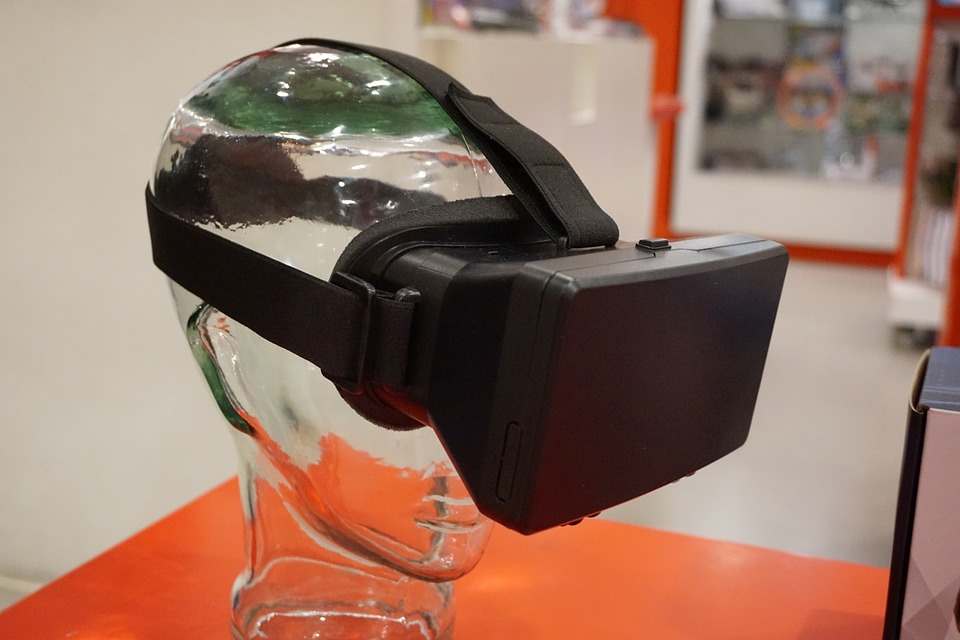In today’s world, technology is like the artist’s brush, painting new landscapes of possibility. Traditional art galleries, with their hallowed halls and silent echoes, have long been guardians of culture and creativity. But now, a new canvas awaits: Virtual Reality (VR). What is VR, you ask? It’s like stepping into a painting or sculpture, but instead of just looking, you can touch, hear, and even smell the art around you. Think of it as a magic portal that transports you anywhere, from the Louvre in Paris to the streets of Tokyo, all from the comfort of your home. VR isn’t just about fancy gadgets; it’s about breaking down barriers.
How Can VR Transform Art Galleries?
VR can bring a sudden and dynamic impact on the traditional art concept and art galleries. Here’s how.
Enhanced Accessibility
In the realm of art, accessibility has long been a challenge. Traditional galleries often have physical barriers, like stairs or narrow doorways, making it difficult for everyone to enjoy the beauty within. But with Virtual Reality (VR), those barriers vanish like a puff of smoke. Imagine being able to explore a museum or art exhibition from the comfort of your own home, without worrying about steps or crowded spaces. VR breaks down these physical barriers, opening up a world of art to people of all abilities.
Moreover, VR extends the reach of art beyond geographical boundaries. No longer constrained by distance, anyone with an internet connection can immerse themselves in galleries and exhibitions from around the globe. Whether you’re in New York City or a small town in rural India, the Mona Lisa is just a click away. This global reach democratizes art, giving everyone the opportunity to experience cultural treasures firsthand.
Take, for example, the British Museum in London. Through VR technology, individuals from every corner of the world can explore its vast collection of artifacts and artworks. From ancient Egyptian mummies to Greek sculptures, the museum’s treasures are now accessible to anyone with a VR headset and an internet connection. This virtual tour not only enhances accessibility but also fosters a sense of cultural exchange and understanding among people from diverse backgrounds.
Immersive Experience
Virtual Reality (VR) doesn’t just show you art; it surrounds you with it. It’s like being inside a painting or sculpture, where you can see, hear, and even feel everything around you. This immersive experience engages all your senses, transporting you into the heart of creativity.
In traditional galleries, you might admire a painting from afar, but in VR, you can step right up to it, examine every brushstroke, and feel as if you’re standing in the artist’s studio. The ability to get up close and personal with art enhances the experience, allowing you to appreciate the intricate details that might go unnoticed in a traditional setting.
Moreover, VR has the power to evoke strong emotions and create deep connections with art. Imagine standing in front of Vincent van Gogh’s “Starry Night,” surrounded by swirling colors and mesmerizing patterns. In VR, you’re not just looking at a painting; you’re experiencing it. The immersive nature of VR intensifies the emotional impact of art, stirring feelings of awe, wonder, and inspiration.
For example, the VR experience “The Night Cafe” allows users to explore a virtual rendition of van Gogh’s famous painting. As you step into the scene, you can hear the faint hum of cicadas, feel the warmth of the room, and watch as the stars twinkle above. This immersive journey creates a profound emotional connection with the artwork, giving viewers a deeper appreciation for van Gogh’s genius.
Personalized Exploration
In traditional art galleries, what you see is what you get. But in the world of Virtual Reality (VR), the possibilities are endless. With VR, you can create customized exhibitions tailored to your interests and preferences. Want to focus on Renaissance masters or contemporary sculpture? With VR, you can curate your own virtual gallery, featuring the artworks that speak to you.
Moreover, VR allows for tailored experiences designed to cater to diverse audiences. Whether you’re a history buff, a budding artist, or a curious traveler, there’s something for everyone in the virtual realm. For example, a history enthusiast might enjoy a VR tour of ancient civilizations, complete with interactive exhibits and educational content. Meanwhile, a budding artist might benefit from virtual workshops and tutorials led by renowned professionals.
One notable example is the VR platform “Museum of Other Realities,” which offers a range of immersive experiences for users to explore. From digital sculptures to interactive installations, the platform allows for personalized exploration of art in virtual space. Users can customize their experience by selecting the artworks they want to view and even interact with them in unique ways.
Preservation and Conservation
In the world of art, preservation and conservation are paramount. Many artworks are delicate and prone to damage over time. Traditional methods of preservation, such as controlled environments and specialized handling, can only do so much. However, Virtual Reality (VR) offers a new solution to this age-old problem.
One of the key benefits of VR in preservation is its ability to safeguard fragile artworks. Instead of exposing delicate pieces to potential harm through physical handling or environmental factors, VR allows for digital preservation. By creating high-resolution scans and 3D models of artworks, VR technology can replicate them in virtual space, ensuring their longevity for future generations to enjoy.
Furthermore, VR provides a means of creating digital archives for posterity. These archives serve as repositories of cultural heritage, preserving artworks in their pristine digital form for future study and appreciation. By digitizing artworks and storing them in virtual archives, institutions can protect against loss or damage due to natural disasters, theft, or deterioration over time.
For example, the Google Arts & Culture platform offers a vast digital archive of artworks from museums and cultural institutions around the world. Users can explore high-resolution images, 3D models, and virtual exhibitions from the comfort of their own homes, ensuring that these treasures are accessible to all, now and in the future.
Cost-effectiveness and Sustainability
Virtual Reality (VR) isn’t just about creating immersive experiences; it’s also about being smart with resources. One way VR transforms traditional art galleries is by reducing overhead costs. Unlike physical galleries that require expensive maintenance, security, and staffing, VR galleries operate in the digital realm, cutting down on these expenses. There’s no need for rent, utilities, or insurance, making VR a cost-effective alternative for showcasing and experiencing art.
Moreover, VR minimizes the environmental impact associated with traditional galleries. Think about it: physical galleries consume energy for lighting, climate control, and transportation of artworks. By comparison, VR galleries are eco-friendly. They don’t require physical infrastructure or transportation of artworks, reducing carbon emissions and environmental footprint. In essence, VR offers a sustainable solution for exhibiting and enjoying art without harming the planet.
Take the example of the Louvre Museum in Paris. Maintaining the iconic museum’s physical infrastructure requires significant financial resources and environmental resources. However, by digitizing its collection and offering virtual tours through platforms like Oculus or Google Arts & Culture, the Louvre can reduce its operational costs and environmental impact. Visitors from around the world can explore the museum’s treasures without leaving a carbon footprint, making art accessible in a sustainable way.
In addition to reducing costs and environmental impact for established institutions, VR also opens doors for smaller galleries and emerging artists. Without the financial burden of maintaining a physical space, artists and curators can focus on creating and sharing their work in virtual galleries. This democratization of the art world fosters creativity and innovation, allowing artists from diverse backgrounds to showcase their talents without breaking the bank or harming the environment.
Besides virtual art galleries and exhibits, there are also other aspects of art viewing, research, and discovery that were enhanced by technology. Check out the 5 Ways Technology Had Aided Art Research and Discovery for more information.
Final Words
Virtual Reality (VR) is reshaping traditional art galleries in profound ways. It enhances accessibility, allows exploration of sound art, fosters immersive experiences, enables personalized exploration, and contributes to the preservation of cultural heritage. Moreover, VR offers cost-effective and sustainable alternatives to traditional galleries, benefiting both institutions and the environment. By breaking down barriers, VR democratizes art, making it more inclusive and accessible to people around the world. As technology continues to evolve, VR promises to revolutionize the way we engage with art, ensuring its preservation and enjoyment for generations to come.
If you are planning to visit an art gallery soon, you may read our list of important things to know before you go to an art gallery for more tips and advice.



